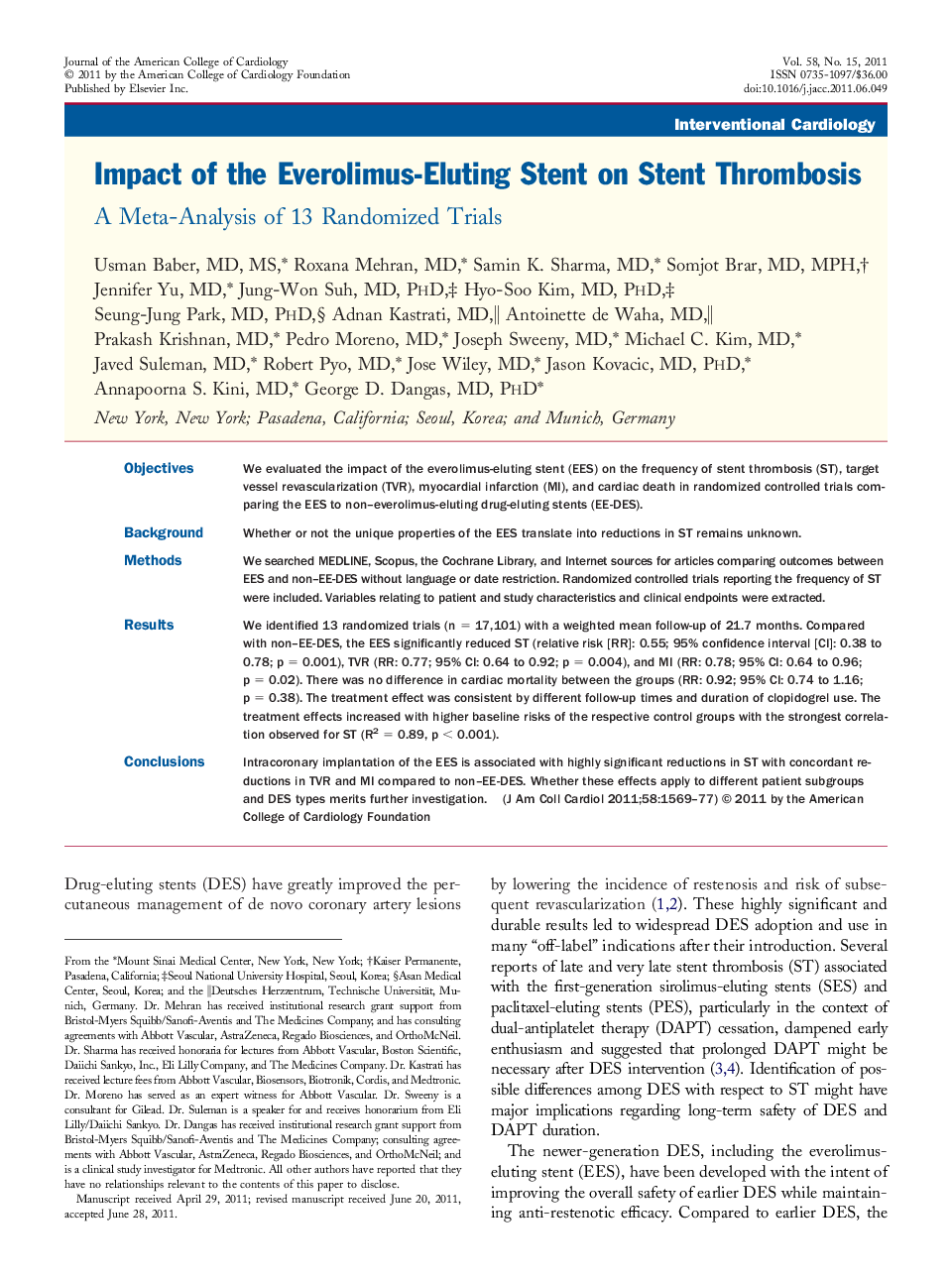| Article ID | Journal | Published Year | Pages | File Type |
|---|---|---|---|---|
| 2947915 | Journal of the American College of Cardiology | 2011 | 9 Pages |
ObjectivesWe evaluated the impact of the everolimus-eluting stent (EES) on the frequency of stent thrombosis (ST), target vessel revascularization (TVR), myocardial infarction (MI), and cardiac death in randomized controlled trials comparing the EES to non–everolimus-eluting drug-eluting stents (EE-DES).BackgroundWhether or not the unique properties of the EES translate into reductions in ST remains unknown.MethodsWe searched MEDLINE, Scopus, the Cochrane Library, and Internet sources for articles comparing outcomes between EES and non–EE-DES without language or date restriction. Randomized controlled trials reporting the frequency of ST were included. Variables relating to patient and study characteristics and clinical endpoints were extracted.ResultsWe identified 13 randomized trials (n = 17,101) with a weighted mean follow-up of 21.7 months. Compared with non–EE-DES, the EES significantly reduced ST (relative risk [RR]: 0.55; 95% confidence interval [CI]: 0.38 to 0.78; p = 0.001), TVR (RR: 0.77; 95% CI: 0.64 to 0.92; p = 0.004), and MI (RR: 0.78; 95% CI: 0.64 to 0.96; p = 0.02). There was no difference in cardiac mortality between the groups (RR: 0.92; 95% CI: 0.74 to 1.16; p = 0.38). The treatment effect was consistent by different follow-up times and duration of clopidogrel use. The treatment effects increased with higher baseline risks of the respective control groups with the strongest correlation observed for ST (R2 = 0.89, p < 0.001).ConclusionsIntracoronary implantation of the EES is associated with highly significant reductions in ST with concordant reductions in TVR and MI compared to non–EE-DES. Whether these effects apply to different patient subgroups and DES types merits further investigation.
